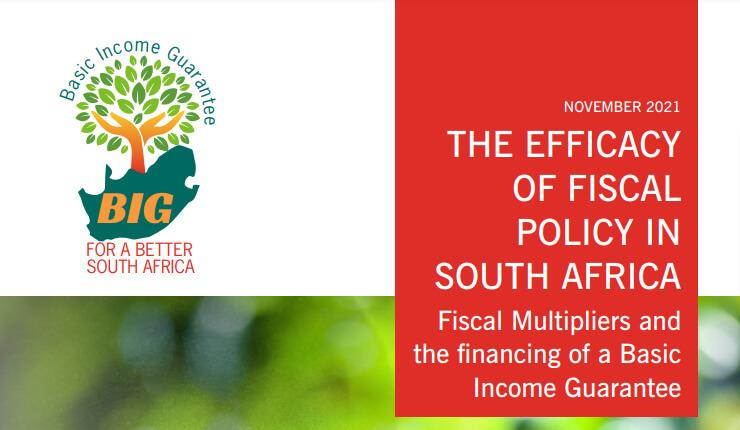The Efficacy Of Fiscal Policy in South Africa


This paper’s objective is to inform South African debates about the feasibility of introducing a Basic Income Guarantee (BIG)
The debate about the efficacy of fiscal policy has remained unresolved in economics for almost a century. This paper will provide a brief overview of international and South African debates and research about fiscal multipliers, which measure the efficacy of fiscal policy. Internationally, there were 734 cash-based measures implemented in 186 countries in the wake of the pandemic-induced recession in 2020 (Gentilini et al. 2021). There has been renewed interest in the concept of Universal Basic Income (UBI). This paper’s objective is to inform South African debates about the feasibility of introducing a Basic Income Guarantee (BIG). Over the past year, there has been a proliferation of research reports about how to finance and implement a BIG. All the reports have proposed various taxes to pay for the BIG.
This is the third of three research papers produced by the Studies in Poverty and Inequality Institute (SPII). The first paper looked at international case studies. The second focused on South Africa and investigated the feasibility of implementing an unfunded BIG, which would provide a significant stimulus to an economy that is reeling from the effects of a “lost decade” in terms of economic development between 2009 and 2019 during which GDP per capita did not grow and a once-in-a-century recession in 2020 that decimated the livelihoods of millions of people. Therefore, this paper seeks to understand the factors that could reduce or increase the stimulus that the BIG could provide to the economy.
National Treasury and the Reserve Bank, drawing from the neoclassical school of economics, have resorted to an extreme position that the fiscal multiplier has fallen to zero and even become negative in recent years. Through various transmission mechanisms, government spending, including on a BIG, can result in the “crowding out” of private investment. According to this view, a BIG would provide no stimulus to the economy. It would result in soaring levels of public debt. However, the alternative Keynesian view says government spending has a multiplier effect on the economy. it can result in an increase in Gross Domestic Product (GDP) and “crowd in” private investment. A BIG can partly pay for itself as higher GDP growth contains the debt ratio and results in an increase in tax revenues.